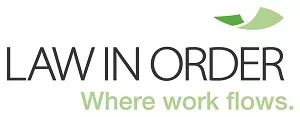Being based in Melbourne means I'm now in ISO2.0. I've been reflecting on my time working from home since March 2020 as I watch the native birds in the gum tree outside my home office.
Having a head office to go to where I can engage with people is great, but I've always enjoyed the flexibility to work from home. Of course, many of us don't have a choice right now.
I have a great team of salespeople who have demonstrated adaptability and flexibility. I also have had to be adaptable and change certain aspects of my approach to managing the team during this time. Below is an outline of some of the leadership qualities and mindset changes I implemented.
Being Vulnerable
Something I did early on with my team was really beneficial for me and I believe that it helped my team.
At the start of the first wave of lockdown I ran a session with our global sales team on the upcoming changes. This included redundancies/terminations, pay cuts, freezes on bonuses and so on. It was emotional and heart breaking for everyone.
The decisions that had to be made were hard and I felt it was important to explain to the team what was happening and why. I wanted to share as much as possible and the session was raw, open and honest. It was hard to do, but important.
Later down the track, as the various states moved into different phases of managing the COVID-19 situation, I ran an online reflection session for the team.
The sales leadership group knew that some in the wider team were struggling. We were all, at some point, feeling flat and unmotivated.
Mostly, the team were maintaining great client engagement and navigating the "new normal" but the sales team generally prefers to meet face to face with clients in order to build lasting relationships, which obviously wasn't possible.
In response, an online reflection session was set up with the global team. I shared that the redundancies / terminations were over but pay cuts and freezes on bonuses were still in place.
Sharing Feelings
I decided to convey how I was feeling to enable the team to also reveal how they were feeling.
I described how I felt I was on repeat day in and day out, and that I was frustrated with the salary cuts. Also, how emotionally tough it had been to make these difficult decisions. While I recognised the decisions were necessary, it didn't make it any easier.
I explained to the team that it's okay to not feel okay at this time, it's okay to use our Employee Assistance Program and it's okay to be angry or frustrated with what was happening. I wanted them to know that it's okay to feel all of those things and that I was feeling it too.
We also took advantage of an interactive tool that gets engagement from the team within minutes via their phone. It's fun to engage with and anonymous, allowing the team to share with the confidence that no-one else will see their answers.
I encouraged them to have discussions with each other, share what they are feeling, celebrate every little win and remember that this will not last forever.
Measurement and Stress Management
A poll was taken on how the team were feeling and we explored the stress curve.
It indicated that the team were tired and in the high range of the stress curve. We acknowledged this and went through some strategies for managing stress.
Finally, we looked at motivation drivers and I shared what motivates me from both an intrinsic and extrinsic point of view.
Taking into account that the sales team had pay cuts and bonus freezes, I let them know how frustrating I found it and that I recognised it was frustrating them. I asked the team to start thinking through what motivated them besides money. If they could recognise these factors, it could help them get out of any rut they may find themselves in.
What I Have Learnt
Members of the sales team reported that communicating how I was feeling and being as open and honest as I could at the beginning was important.
Personally, it has helped me to share my feelings. My hope is that it demonstrated to the team that I am also experiencing a range of emotions, as they are, and this helped them feel okay about not always being okay. It was important for the team to understand that, as a business, we do recognise the human side of the situation.
Writing this has been difficult. Being vulnerable is hard, but as a leader, being vulnerable is key to building human connections. It demonstrates authenticity and shows your team that they can take courage in being themselves.
As Brené Brown stated, "The courage to be vulnerable is not about winning or losing, it's about the courage to show up when you can't predict or control the outcome."
My aim in being vulnerable in front of my team was to indicate my trustworthiness as a leader and provide hope to the team.

